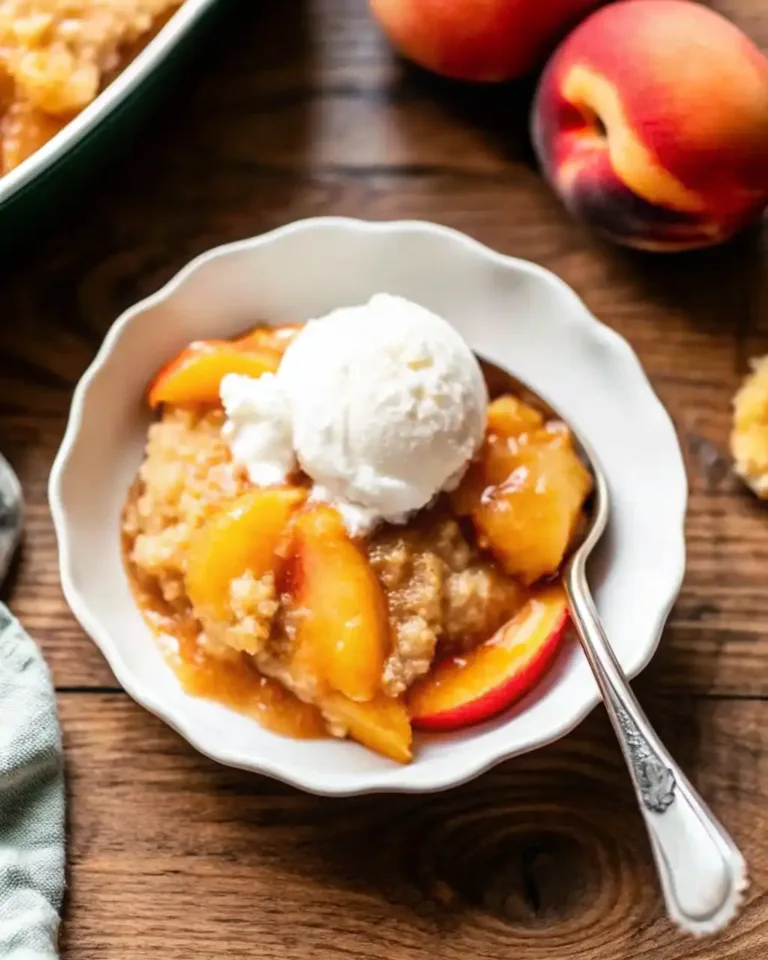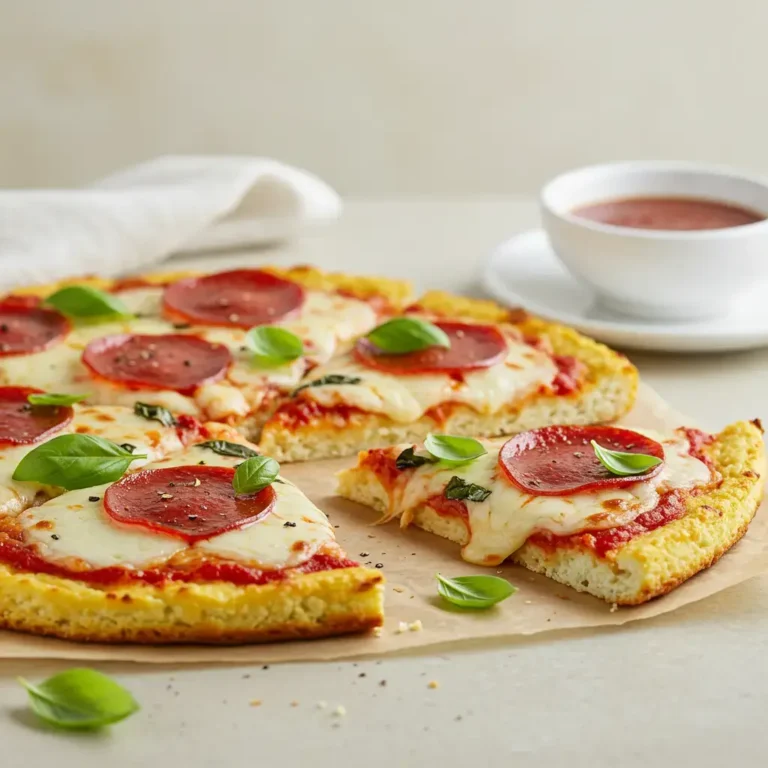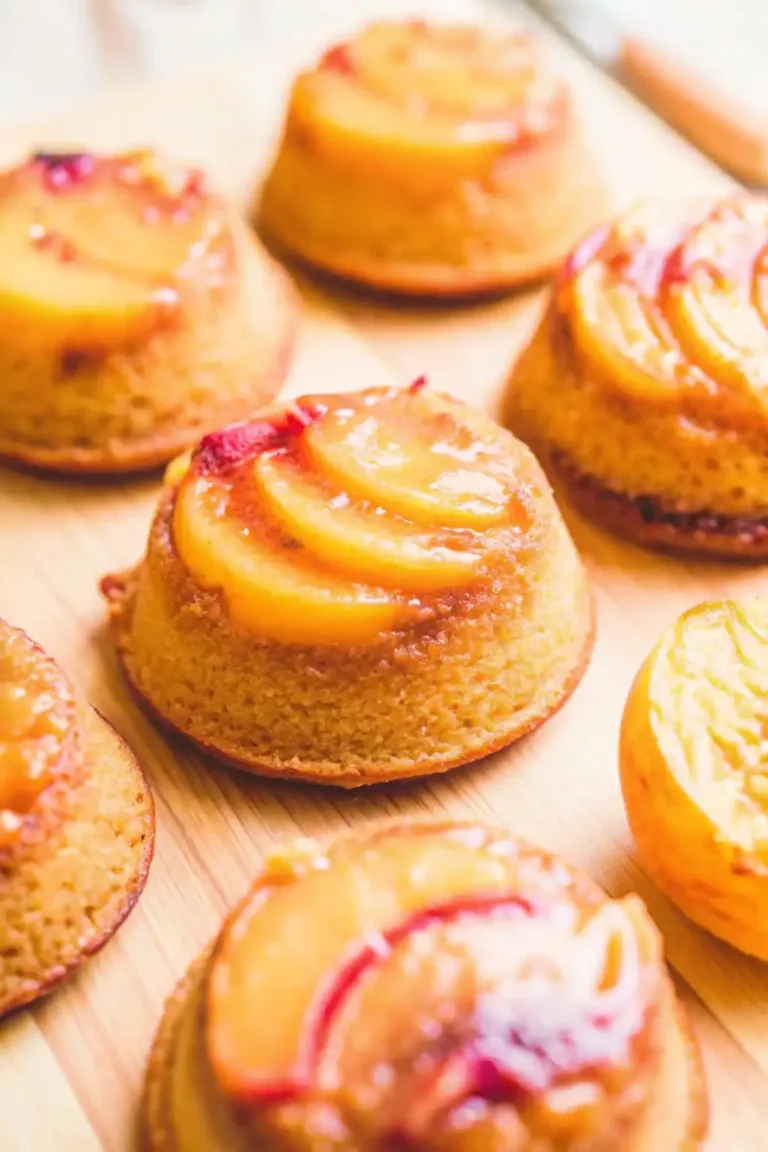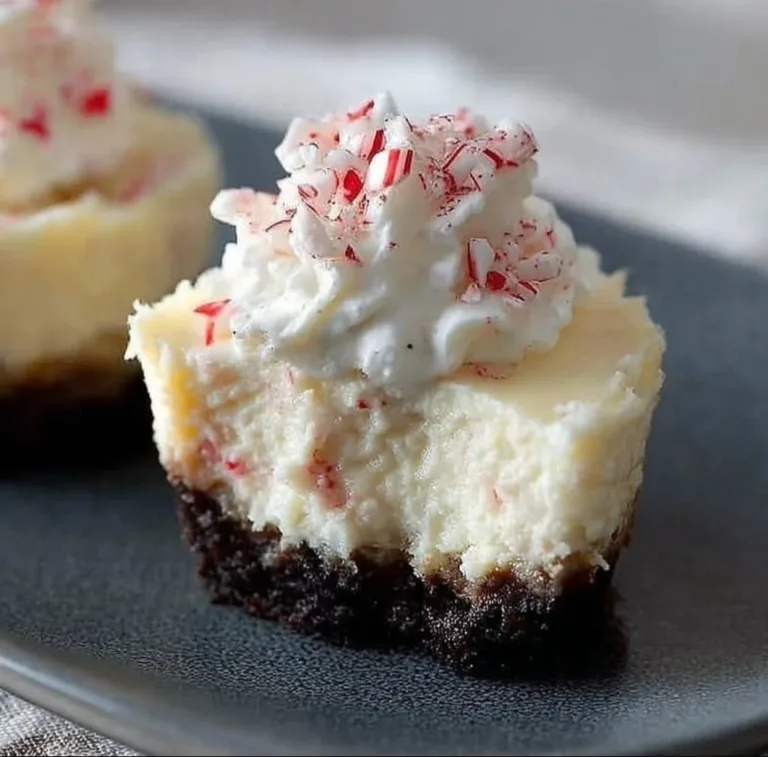Ceviche Food Description: A Zesty Dive Into the Classic Seafood Dish
Ceviche is one of those dishes that stops you mid-bite bright, tangy, and electric on the tongue. It’s a seafood staple that’s as much about the lime and herbs as it is the fish. In this article, we’ll explore what ceviche actually is, what goes into making it, and how it feels to eat something so fresh it tastes like the ocean itself. You’ll learn about its unique flavor profile, where it comes from, and how to make it right in your own kitchen. Whether you’ve tried ceviche or are just curious, this guide will give you the full ceviche food description
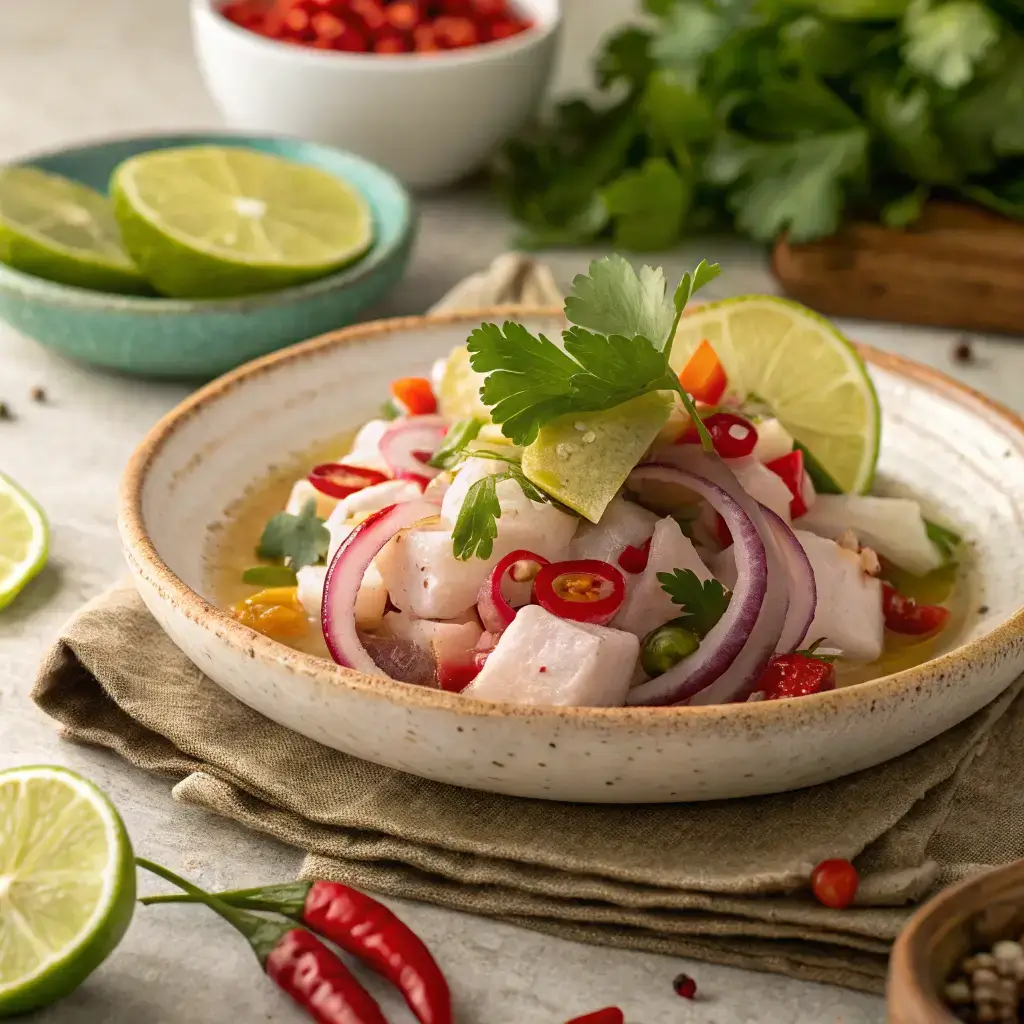

Ceviche Food Description: A Zesty Dive Into the Classic Seafood Dish
Ingredients
Method
- 1. Cut the fish into small, even cubes and place in a non-metal bowl.
- 2. Pour lime juice over the fish until completely covered.
- 3. Let marinate for 15–30 minutes until fish turns opaque.
- 4. Drain slightly if desired and add onion, chili, cilantro, and salt.
- 5. Gently fold in avocado or mango if using.
- 6. Serve immediately, chilled.
Nutrition
Notes
Tried this recipe?
Let us know how it was!Table of Contents
Why Ceviche Means More Than Just Seafood
A Personal Taste of Ceviche’s Charm
The first time I had ceviche, I was seventeen, working as a prep cook in New Orleans. One of the line cooks had grown up in Peru and made a batch for staff meal cubes of snapper swimming in lime juice, tossed with red onion, cilantro, and just a kiss of chili. I remember how it didn’t taste cooked in the usual way, but it didn’t feel raw either. It was alive. Bright. Sharp. Like it had a story to tell with every bite.
That moment stuck with me. Ceviche became one of those dishes I chase through time and place on a plastic plate by the beach in Mexico, in an elegant coupe glass in Miami, and now, at home here in Asheville, North Carolina, where I serve it in vintage bowls at Copper & Thyme, my supper club. It’s more than just food it’s ceremony, sunshine, and soul in a bowl.
And yet, the beauty of this dish can be hard to put into words. That’s why creating a vivid ceviche food description matters not just to explain what’s in it, but to communicate how it feels. Every ceviche food description I’ve written over the years has tried to translate that brightness and soul onto the page. It’s more than seafood it’s culture, acidity, texture, and life.
You’ll find ceviche across Latin America, each region adding its twist. But the essence remains: raw seafood cured in fresh citrus, layered with onions, herbs, and heat. From roadside stands in Lima to tasting menus in Los Angeles, ceviche tells a story and a good ceviche food description helps you hear it before you even take a bite.
If you enjoy dishes that let ingredients shine, our chilean-ceviche recipe
Understanding What Makes Ceviche Special
What separates ceviche from other seafood dishes isn’t just the preparation it’s the philosophy. Simplicity meets boldness. The acid “cooks” the fish, transforming both texture and taste. This technique is central to every ceviche food description because it defines the dish: no heat, no grill just chemistry and patience.
Beyond the lime and fish, ceviche invites creativity. In Peru, sweet potatoes and cancha bring comfort and crunch. In Mexico, avocado and mango add cream and sweetness. Each bite feels complete.
To write a great ceviche food description, you have to respect that balance. It’s not a recipe it’s a rhythm. And when done well, it’s unforgettable.
What is Ceviche? (Explaining the Basics)
How Would You Describe Ceviche?
Ask five chefs to give a ceviche food description, and you’ll likely get five variations, all bright and passionate. At its core, ceviche is a seafood dish made by marinating raw fish or shellfish in citrus juice usually lime or lemon. The acid denatures the proteins, firming the texture and turning it opaque, much like cooking with heat, but without ever lighting a flame.
That transformation is what makes it so unique. Ceviche is cold, crisp, and zippy, layered with thin-sliced onions, chili peppers, herbs like cilantro, and sometimes tropical fruits. The result? A dish that tastes like summer on the coast bold, fresh, and deeply satisfying.
When writing a ceviche food description, it’s not just about listing ingredients. It’s about capturing the feeling of that first bite: the tang of citrus, the tingle of chili, and the whisper of the ocean in every chew.
Looking for a lighter dinner idea with the same flavor punch? Try this chilean-ceviche
What Food is Usually in Ceviche?
The ingredients vary by region, but the ceviche food description almost always begins with fresh seafood. Common choices include white fish like snapper, sea bass, or tilapia. In coastal regions, shrimp, scallops, octopus, and even squid are popular additions.
Here’s a simple breakdown:
| Core Ingredient | Typical Examples |
|---|---|
| Seafood | Fish (snapper, bass), shrimp, scallops |
| Citrus Juice | Lime, lemon |
| Aromatics | Red onion, cilantro, garlic |
| Heat & Extras | Chili peppers, mango, avocado, corn |
One thing all ceviche recipes have in common? They rely on ultra-fresh ingredients. Because the seafood isn’t cooked in the traditional sense, freshness isn’t optional it’s everything. And any well-written ceviche food description will emphasize that point.
The Flavor Profile & Texture
What Does Ceviche Taste Like?
Imagine biting into something cold and citrusy, where each element fish, lime, herbs, and chili hits a different part of your palate. That’s ceviche. It’s sharp from the citrus, refreshing like sea spray, and has a faint peppery burn that lingers just long enough to make you want more.
In a true ceviche food description, taste is everything. It’s not just acidic it’s vibrant. The fish tastes clean, like it was just pulled from the ocean. The onions add bite, the cilantro freshness, and the chili? A whisper of danger in every spoonful. Some versions even layer in sweetness with mango or creaminess with avocado, creating a balance of flavors that’s hard to beat.
The taste can shift depending on the region or recipe. Mexican-style ceviche often leans spicy and may include tomato or clam juice, while Peruvian versions are lime-dominant with subtle heat and sweet potato on the side. But across all styles, the underlying experience remains: a bright, briny celebration of freshness.
Is Ceviche Completely Raw?
This is one of the most common questions in any ceviche food description. The answer? It depends on how you define “raw.”
Technically, ceviche isn’t cooked with heat but it is transformed. The acid from the citrus breaks down the proteins in the seafood, changing its texture and appearance. This process, called denaturation, gives it a firm, opaque quality, much like poaching or steaming would without ever touching fire.
So while the seafood may not be “cooked” by temperature, it’s certainly not raw in the sushi sense. That distinction is crucial in any responsible ceviche food description. The lime juice acts as a natural preservative and purifier but only when paired with the freshest, highest-quality seafood.
Some cooks par-cook shrimp or scallops before marinating, especially if serving to larger groups or those new to ceviche. But traditionalists will tell you: acid-only is the soul of the dish.
Making and Serving Ceviche at Home
Essential Ingredients and Simple Methods
Now that you know what goes into a solid ceviche food description, let’s talk about how to actually make one. The beauty of ceviche is that you don’t need fancy equipment or a culinary degree just quality ingredients and respect for freshness.
Here’s the basic method:
Start with a firm white fish snapper, sea bass, halibut, or even tilapia. Cut it into small, even pieces. Then soak the fish in freshly squeezed lime or lemon juice for about 15–30 minutes, depending on the texture you want. The acid will begin to “cook” the fish almost immediately.
Add in thin-sliced red onion, chopped cilantro, diced chili peppers, and a pinch of salt. From there, you can customize maybe a splash of orange juice for sweetness, cubes of avocado for creaminess, or mango for tropical flair.
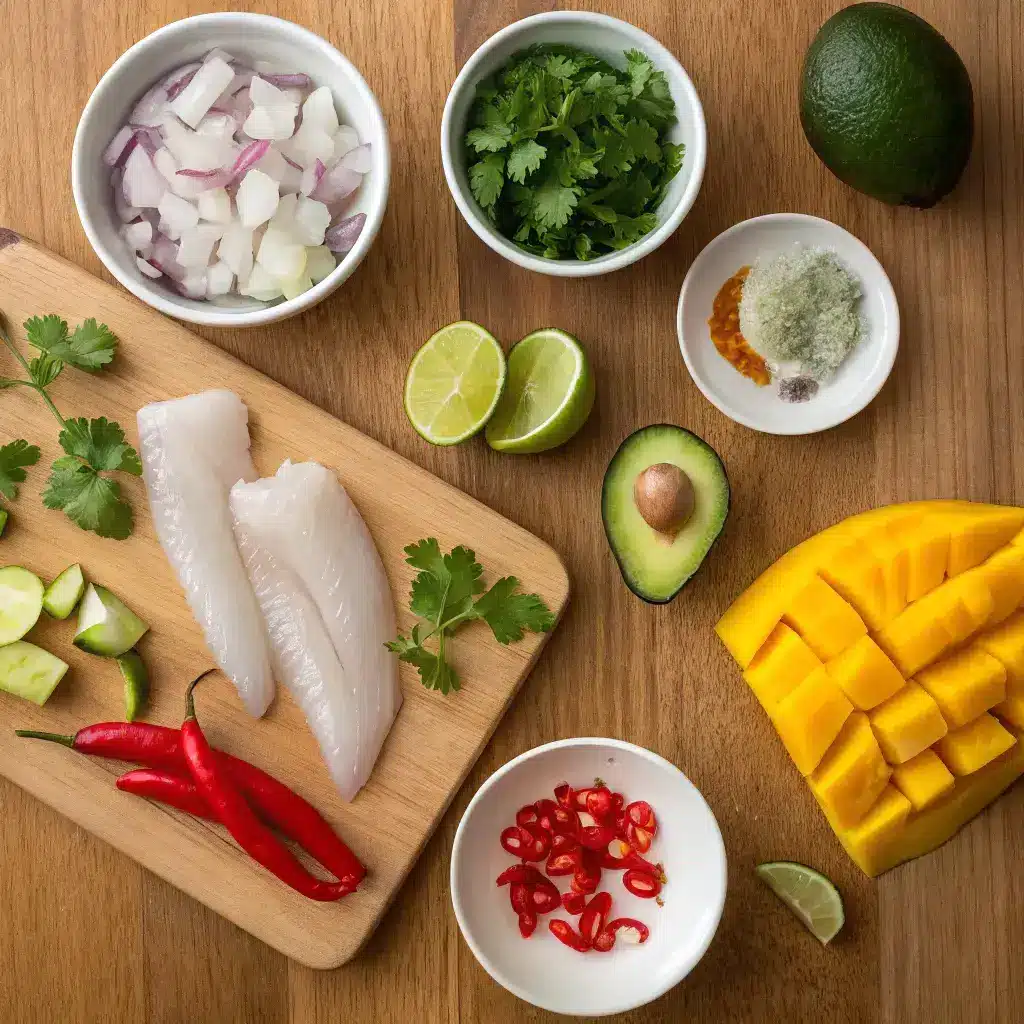
Here’s what you’ll need:
| Ingredient | Purpose |
|---|---|
| White Fish | Base protein, firm texture |
| Lime Juice | Acid that denatures the fish |
| Onion, Chili, Cilantro | Aromatics and heat |
| Optional Add-ins | Avocado, mango, tomato |
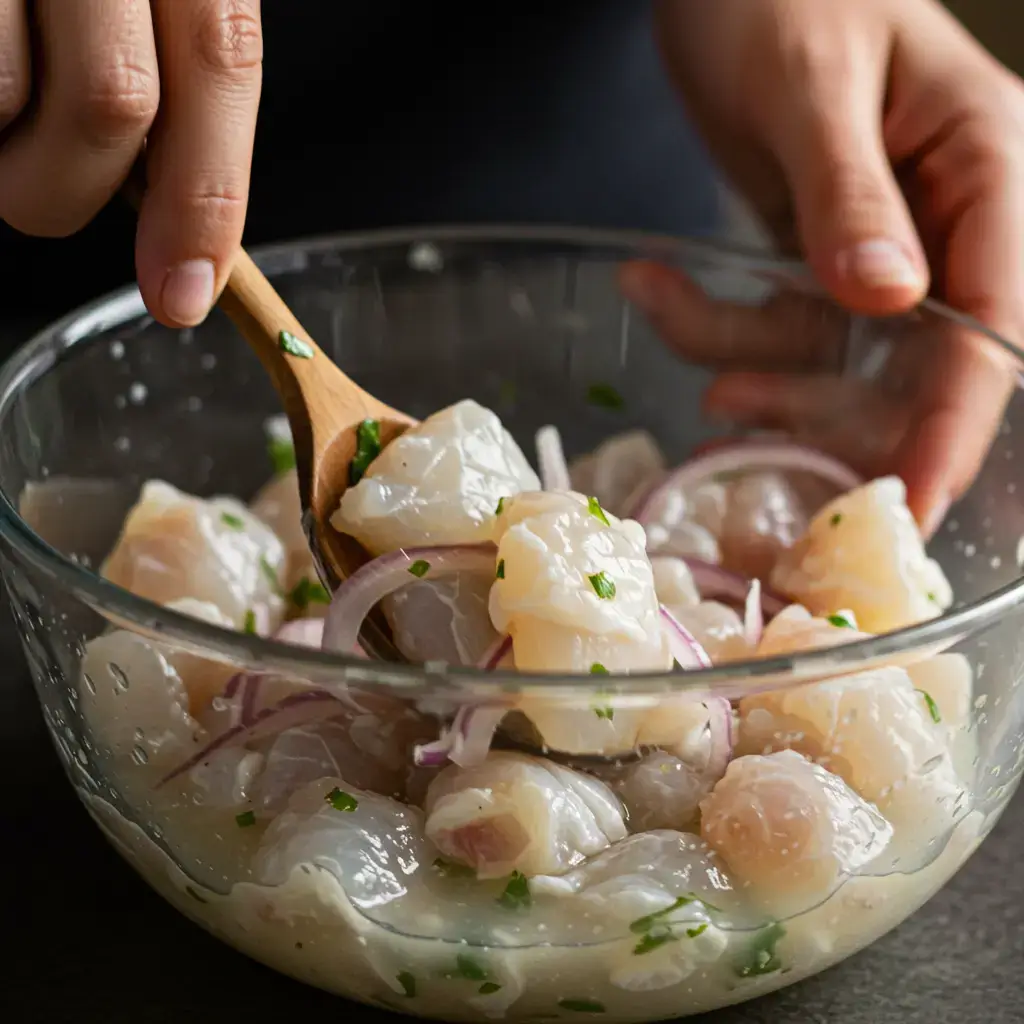
Pairing, Plating, and Presentation Tips
When it comes to serving, presentation plays a big part in any ceviche food description. Small bowls, chilled plates, or even martini glasses can elevate the experience. Garnish with microgreens, sliced radish, or thin-cut citrus wheels for visual appeal.
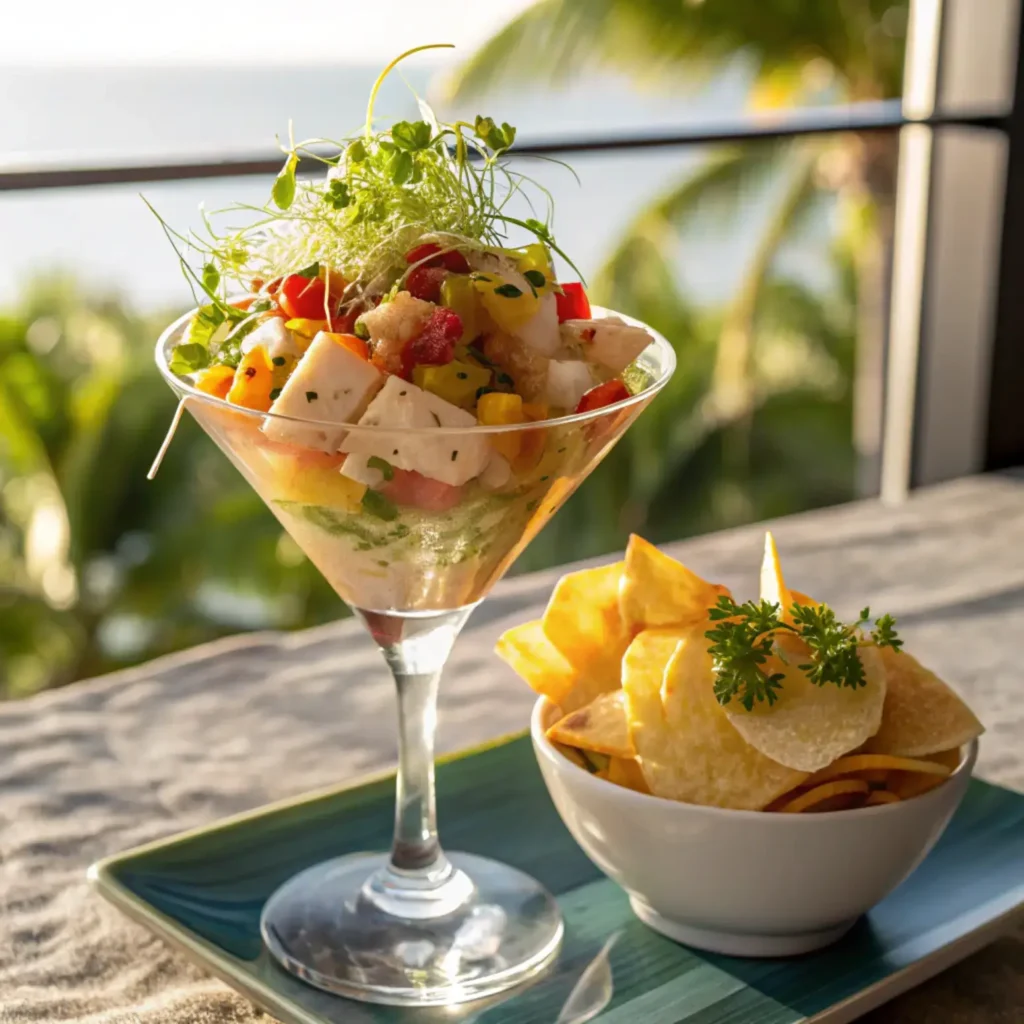
Ceviche is often enjoyed with crispy elements think plantain chips, tostadas, or saltine crackers. In Peru, it’s served with sweet potato and corn for balance. The key is contrast: cold ceviche with warm or crunchy textures creates a dynamic bite.
Whether you’re preparing a dinner party dish or a quiet solo lunch, the process of building ceviche invites creativity and intention. That’s what makes it so powerful and why crafting a strong ceviche food description matters not just online, but around your own table.
Conclusion: Ceviche, the Dish That Speaks in Citrus
When you sit down to a chilled bowl of ceviche, you’re tasting more than seafood you’re tasting sunshine, salt air, and tradition. Every bite is sharp, clean, and layered with love. Whether you’re reading a ceviche food description online or writing one of your own, remember that it’s not just about ingredients it’s about honoring where it comes from and the story it tells.
So grab some fish, some limes, and a bowl. Let the acid do the work, and let the flavors sing.
For More Recipes FOLLOW ME : Pinterest
FAQs: Ceviche Food Description
How would you describe ceviche?
Ceviche is a bright, citrus-marinated seafood dish that combines fresh fish or shellfish with lime juice, onion, chili, and herbs. It’s refreshing, tangy, and slightly spicy with a firm, “cooked” texture though no heat is used. A ceviche food description often includes words like vibrant, zesty, and ocean-fresh.
What food is usually in ceviche?
The base is typically raw white fish such as snapper, tilapia, or sea bass. Additions include red onion, cilantro, lime juice, and chili peppers. Some recipes also include shrimp, scallops, avocado, mango, tomato, or corn. The key to any ceviche food description is that freshness is essential.
What is ceviche supposed to taste like?
It should taste bright, acidic, clean, and slightly spicy. The lime juice gives it a sharp tang, while the herbs and onions add layers of freshness and depth. It’s meant to feel light yet complex an ideal balance of citrus, salt, heat, and brine.
Is ceviche completely raw?
No but it’s not traditionally cooked with heat either. The fish is “cured” or denatured by the acid in the citrus juice, which changes its texture and appearance. While it begins raw, the transformation gives it a firm, opaque finish. That’s an important nuance in any ceviche food description

